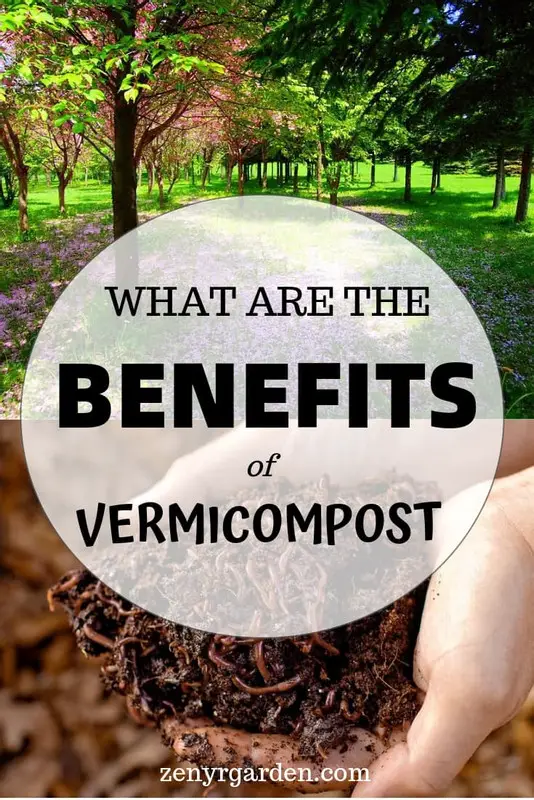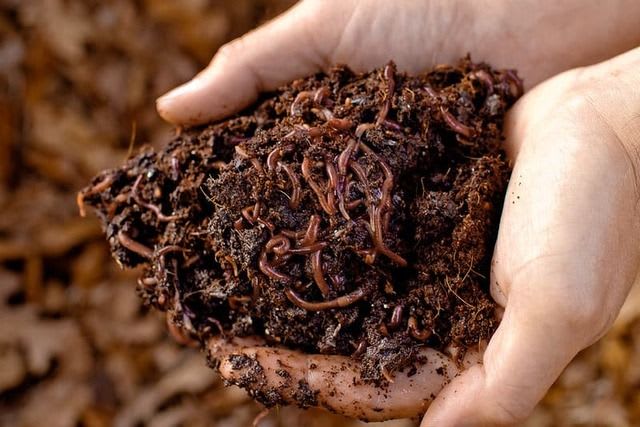Vermicompost packs a ton of benefits for plants, chickens, pigs and even fish. If you have a garden, you can use the vermicompost to fertilize the veggies and flowers. Having been bio-converted by the worms, the nutrients in the compost can be taken up directly by the plants.
If you have an aquaponics system set up, you can use the compost to feed the plankton (which then get fed to the fish) and to clear the water. A little-known benefit of the worm biomass is that it has the power to prevent diseases for plants and animals.
If you're raising red worms or red wigglers, there are 3 big benefits that you can get:
- Worm bio-mass
- Worm castings (which is the vermicompost)
- Worm plasma (which prevents diseases)
Together, let's explore each benefit below:
#1. Harvesting Worm Bio-Mass
If you're keeping red worms or other types of composting worms, then their live bio-mass can be fed directly to the chickens, pigs or fish.
Inside the worm bodies, there is about 30% protein after they have converted the food waste into nourishing nutrients. The worms also help strengthen the animals' digestive system by keeping the bad group of guys away from their stomach.
Some people dry the worm bio-mass and put them in a sac in their aquaponic ponds. This is used as a 'fertilizer' for the pond. It helps feed the microscopic creatures in the water.
By being fed with good food, these creatures will then help nourish the fish that we are raising. The bio-mass of the worm also excretes a pheromone called plasma that keeps the bad guys away & clears the water.
/vermicompost-bag-in-pond.jpg)
Alternatively, you can turn the worm biomass into dried pellets. The recipe can be 1 kilo of dried worm mixed with 100-150 kilo of greens, grains, bones, veggies, fruits or critters.
If you're pelletizing for chicken feed, make the pellet into a cylindrical shape. If it's for fish food, make the pellet round for easier swallowing & digesting.
While the bio-mass of the worm has about 30% of the protein, so where does the remaining 70% go? Yes, it's time to bring out the big guns which is:
#2. Collecting the Vermicompost
Vermicompost, or worm poop, packs about 70% of the protein that a red worm excretes out. Ranked second only to some microorganism, red worms are one of the earth's most efficient converters of biological matters.
In contrast to black soldier flies (another amazing composter) which eat a lot but excrete little, red worms eat little but excrete a lot. This is evident in the amount of worm castings you'll get.
Within a space of 100 square meter or 1000 foot square, if all goes well, we can expect to get about 10-12 tons of vermicompost within about 6 months. As for their bio-conversion rate, 1 ton of red worms can process about 70-80 tons of organic waste or 50 ton of animal manure for 3 months.
If you want to boost up the production to get more worm castings, try feeding them with:
- Black soldier fly castings
- Bokashi grains
- Treated pig manure
People have found that these red worms love the BSF castings. They produce 10x more and faster when fed with this stuff as well so with the bokashi grains. If we know how to treat pig manure before feeding the worms, it can be twice as good as cow manure and other grass-fed animal excretions.
Inside the worm's stomach are some digestive enzymes that help them chop up long chains of protein into smaller digestible amino acids. After their fast transformation of organic waste, the worms will produce that vermicompost that contains nitrate (NO3-), phosphorous (P), magnesium (Mg), calcium (Ca), and nitrogen (N). All that good stuff that can help the plants grow well.
These are all water soluble (e.g. good for making compost tea), making them even nicer for the plants to munch on. Some people say vermicompost also has the natural growth hormone IAA (Indole-3-acetic acid) in it. This helps with strong & sustainable root growth.
And for last key benefit, we can use the worms & their compost for:
#3. Preventing Diseases
If you may recall from earlier, the surrounding body and castings of the worms have something called plasma. This is like the invisible shield, the protection guard saying "Nah, y'all don't want to mess around here with me" to the little bad guys.
These little bad guys are usually those that can cause digestive diseases for the chicks or the pigs. They are about 4 micrometers or less in size. The good microbes are usually bigger. And so, this is one way we can tell their difference.
With these little protectors sprayed around, we increase the number of beneficial organism for the garden while keeping the not-so-good ones away. In a way, this keeps the environment healthy, nice and good for the plants, the animals around and for us human to live in.
Get to Raising Worms & Harvesting Vermicompost
As you can see, there are some quite good benefits to raising worms and using their castings for the garden. All of these need not be complicated or rocket science. In fact, everyone can join in the fun and make it at home.
If you're looking for somewhere to start, Northwest Red Worms, PopWorms or Uncle Jim's Worm Farm are some good places to get worms. There are many other good sellers as well.
Hope this post has given you some ideas with vermicompost & how it may lend itself to your gardening, farming or chicken raising interests. Cheers & see you here again next time. Have yourself a fantastic day.
On the topic of vermicomposting, you may want to check out the possible disadvantages of it for a balanced view:
Share or pin this post!


